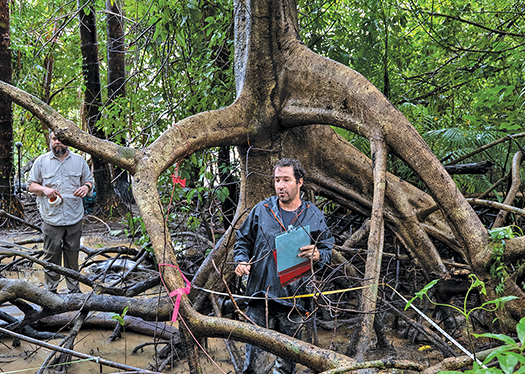
National Geographic Explorers Thiago Silva (left) and Angelo Bernardino, examining Amazon Delta mangroves. (Photo by Corey Robinson, National Geographic)
Scientists are urging special protection of mangroves found in two unexpected places—freshwater ecosystems in Mexico’s Yucatán Peninsula and the Brazilian Amazon. Ongoing study of the stands—discovered far inland in Mexico’s Tabasco state and in freshwater areas of the Amazon Delta—could reveal how certain mangroves can adapt to an aquatic environment of near-zero salinity. That work, while important in its own right, might also help gauge the potential of mangroves to sequester carbon in areas other than the saline or brackish coastal environments where they had been assumed to grow exclusively. Mangroves in general have been found to capture far more carbon than forests do. That’s thanks largely to their ability to store carbon in their wet, peaty soils, which slow decomposition of fallen leaves, branches and other matter. (See "Mangrove seen as weapon in climate war"Log in to read more]